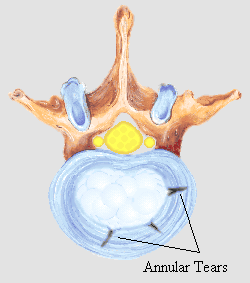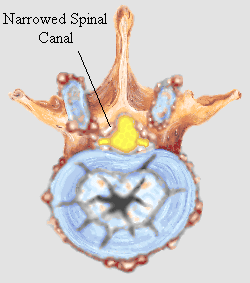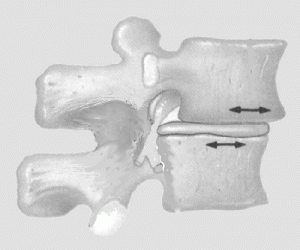Back Pain
Approximately 90% of individuals will have an episode of back pain at some point in their lifetimes. Of these 90%, approximately 50-60% individuals will have recurrent back pain. Bottom line, back pain is very common. Most importantly, 90% of the time, back pain will resolve by 6 weeks.
That being said, while most back pain is benign, it is important not to ignore your symptoms. In particular, if your back pain is associated with sciatica type pain (pain down the legs), new onset bowel or bladder incontinence (difficulty with controlling your bathroom habits), numbness, difficulty walking, or any other concerning symptoms, it is important to seek medical help.
There are numerous causes of back pain. A few of the more common causes of back pain are discussed below:
Herniated (ruptured) Disk
The disk is composed of two parts; the soft center (nucleus pulposus) and the surrounding tough, fibrous outer ring (annulus). A herniated disk is one in which the tough outer ring tears (annular tears ) and allows the soft center to protrude or bulge through the tear.
Even a small amount of disk material in the spinal canal can cause significant symptoms by pressing on the nearby spinal nerves. This can lead to weakness, numbness, and sciatica type pain. Pain also can be referred to the back. Pain can be mild to severe and be made worse by walking, bending, lifting, sneezing, coughing, and/or straining.
The two most common levels of disk herniation are at L4-L5 and L5-S1.
 Spondylolysis
Spondylolysis
Spondylolysis is a fracture or defect of the pars interarticularis, an area of the bone in the posterior vertebra. It most commonly occurs at the L5 vertebra. This condition is thought to be due to a stress fracture and is common in female gymnasts, power weight lifters, rowers, and football linemen.
For individuals with frequent and significant episodes of disability related to spondylolysis, surgery to fuse the fracture may be recommended.
Degenerative Disc Disease
As we age, the discs in our back lose water content and begin to break down. They become stiff and flatten, losing their ability to act as shock absorbers. The end result of this is that the surrounding anatomy begins to see increased load and ultimately becomes arthritic. As the normal anatomy becomes distorted, this can also lead to instability in the spine. Unstable vertebrae can slip back and forth irritating the nearby nerves (this is called degenerative lumbar spondylolisthesis).
Even in the absence of instability, as arthritis progresses, bone spurs and overgrowth of ligaments can lead to pinching of nerves (called lumbar spinal stenosis).
Spinal Stenosis
 Spinal stenosis is a narrowing of the spinal canal or of the nerve root openings (neural foramen). The narrowing may result from bone spur formation, soft tissue encroachment, or both. This typically occurs as a result of degenerative disc disease.
Spinal stenosis is a narrowing of the spinal canal or of the nerve root openings (neural foramen). The narrowing may result from bone spur formation, soft tissue encroachment, or both. This typically occurs as a result of degenerative disc disease.
Narrowing of the spinal canal or the neural foramen may put pressure on the nerves or spinal cord, causing back and leg pain.
Based on the severity of the symptoms, surgical removal of the impinging structures (called a decompression) may be necessary to help relieve symptoms. Depending on the condition of your spine e.g. if there is any underlying instability, in addition to surgical removal of structures that are causing the pressure, spinal fusion may be warranted.
Spondylolisthesis

Spondylolisthesis is a forward slip of one vertebra on top of another (which can occur at any level). This slippage can lead to back pain or pinching of nerves, which can cause leg symptoms.
Spondylolisthesis can result from an underlying abnormality of the normal spinal anatomy. Slips can also occur from long standing arthritis or even due from injury. Sometimes a hairline fracture allows vertebrae (i.e. spondylolysis) to slip forward on top of one another.
If significantly symptomatic, spondylolisthesis may be treated with spinal fusion.
Other Causes of Back Pain
It is very important to remember that there are many causes of back pain that are not necessarily related to the spine. For instance, problems with the kidney, the gastrointestinal system, or even the major vessels of the body can refer pain to the back. Therefore, it is important to see your doctor if you are having back pain.
Note that the information in this article is purely informative and should not be used in place of recommendations from your surgical team.
Related Articles
Lumbar Spinal Fusion
Most Common Causes of Lumbar Back Pain
Your Visit With The Surgeon
Getting Yourself Ready For Surgery
Understanding Back Precautions
Making Arrangements For Surgery
Your Hospital Visit
Lumbar Spinal Fusion Surgery
Recovery At Home
When To Call Your Surgeon
Long Term Care For Your Back
More Information:
